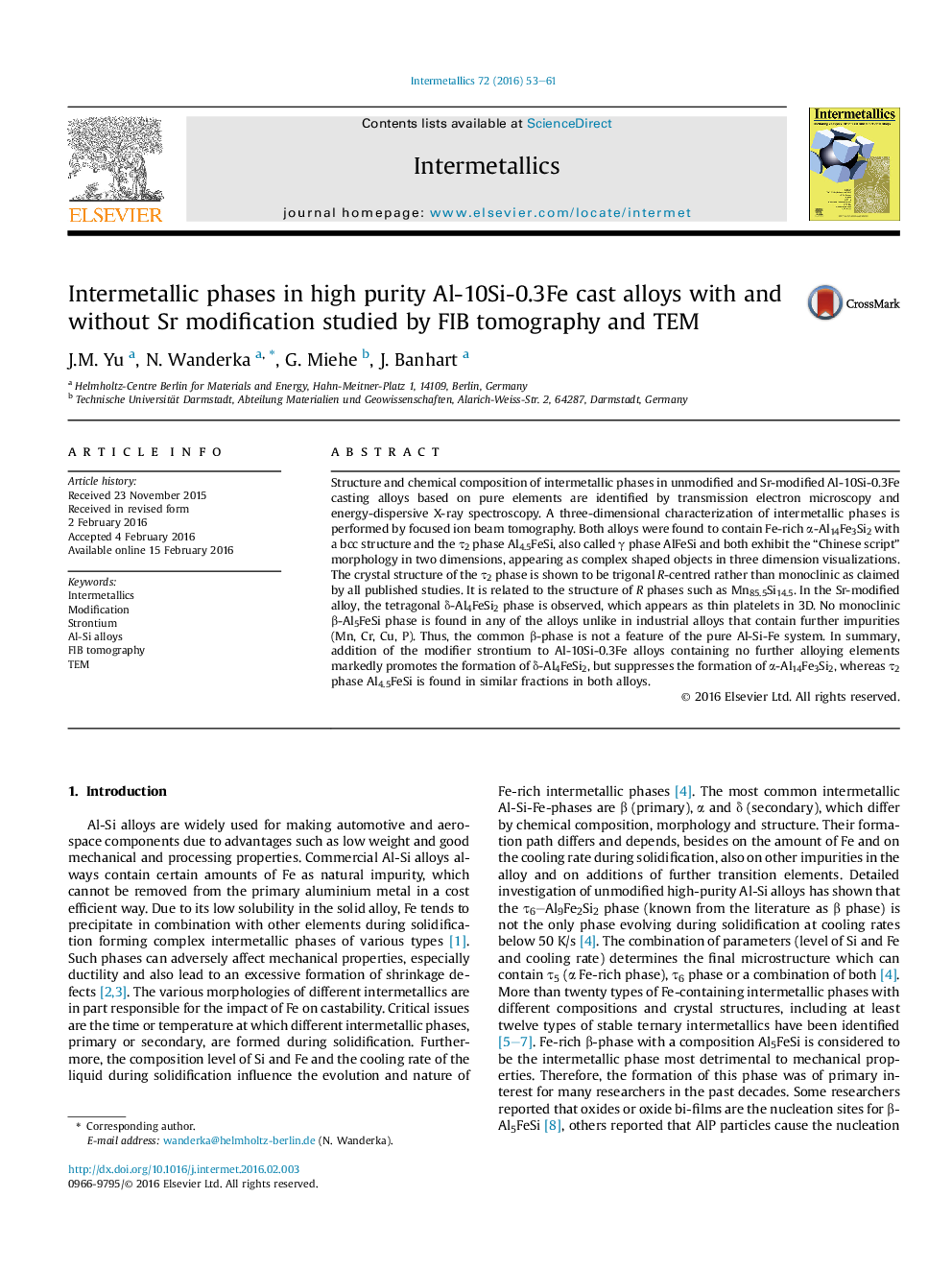| Article ID | Journal | Published Year | Pages | File Type |
|---|---|---|---|---|
| 1599613 | Intermetallics | 2016 | 9 Pages |
•Influence of strontium additions on formation of Fe-rich intermetallic phases.•Identification of a γ-AlFeSi (τ2 phase) intermetallic phase.•Crystal structure determination of a γ-AlFeSi (τ2 phase) intermetallic phase by selected area electron diffraction in TEM.•Visualization of morphology of Fe-rich α and δ intermetallic phases by focus ion beam tomography.
Structure and chemical composition of intermetallic phases in unmodified and Sr-modified Al-10Si-0.3Fe casting alloys based on pure elements are identified by transmission electron microscopy and energy-dispersive X-ray spectroscopy. A three-dimensional characterization of intermetallic phases is performed by focused ion beam tomography. Both alloys were found to contain Fe-rich α-Al14Fe3Si2 with a bcc structure and the τ2 phase Al4.5FeSi, also called γ phase AlFeSi and both exhibit the “Chinese script” morphology in two dimensions, appearing as complex shaped objects in three dimension visualizations. The crystal structure of the τ2 phase is shown to be trigonal R-centred rather than monoclinic as claimed by all published studies. It is related to the structure of R phases such as Mn85.5Si14.5. In the Sr-modified alloy, the tetragonal δ-Al4FeSi2 phase is observed, which appears as thin platelets in 3D. No monoclinic β-Al5FeSi phase is found in any of the alloys unlike in industrial alloys that contain further impurities (Mn, Cr, Cu, P). Thus, the common β-phase is not a feature of the pure Al-Si-Fe system. In summary, addition of the modifier strontium to Al-10Si-0.3Fe alloys containing no further alloying elements markedly promotes the formation of δ-Al4FeSi2, but suppresses the formation of α-Al14Fe3Si2, whereas τ2 phase Al4.5FeSi is found in similar fractions in both alloys.
